This is a guest post by Dr. Brian Linkhart, Professor in the Department of Organismal Biology and Ecology at Colorado College, and the 2022 recipient of Bird Conservancy’s Richard G. Levad Award.
By my students’ calculations, we had spent over 50 hours trying to capture this particular Flammulated Owl, dating back two summers. Make no mistake—there have been many challenging owls to capture over the course of this 40-year demographic study, but this owl had drawn extra attention from the nine students working with me that summer, with its Houdini-esque tactics for evading capture at a nest cavity high in a quaking aspen.
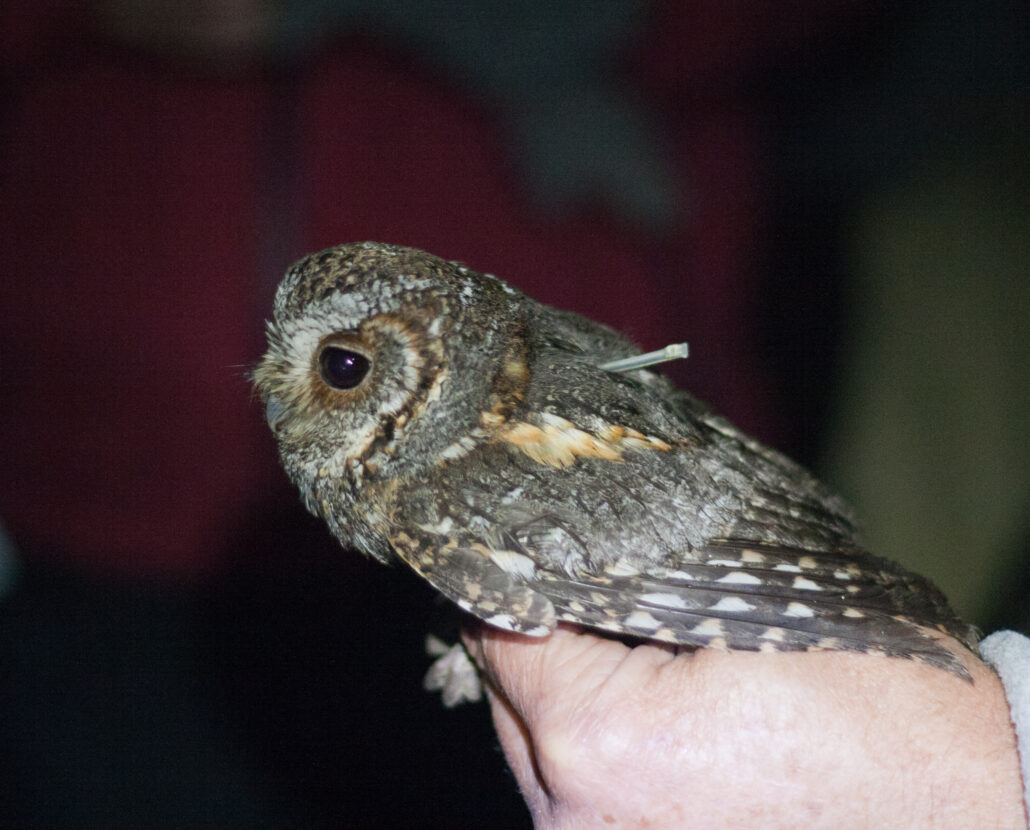
That the diminutive owl (50 g, or four Oreos, my students would say) might be carrying a geolocator on its back also was on everyone’s mind. This is a multi-vitamin-sized device that archives light intensity every two minutes for 16-18 months, and once recovered, this data can tell us daily sunrise and sunset times—ultimately latitude and longitude, from which we can unmask an animal’s long-distance journeys. If we could only capture it, we could find out if it was in fact the first flam—a male, we deployed with a geolocator in 2009, which was about when these devices became lightweight enough to use on small birds. And if it was him, we could learn—for the first time—where Flammulated Owls wintered, how and when they traveled to get there, and what habitats they used throughout the journey. Up to this time, so little was known about the owl’s migratory status that at one point it was mused that the insectivorous flams might undergo torpor and remain on their breeding grounds year-round, much like Common Poorwills. The problem was, we did not even know if this particular male was still alive, since we had last captured him two years earlier (when he last successfully nested), if the device was still working after two years, or if we could even recapture him to download the data!
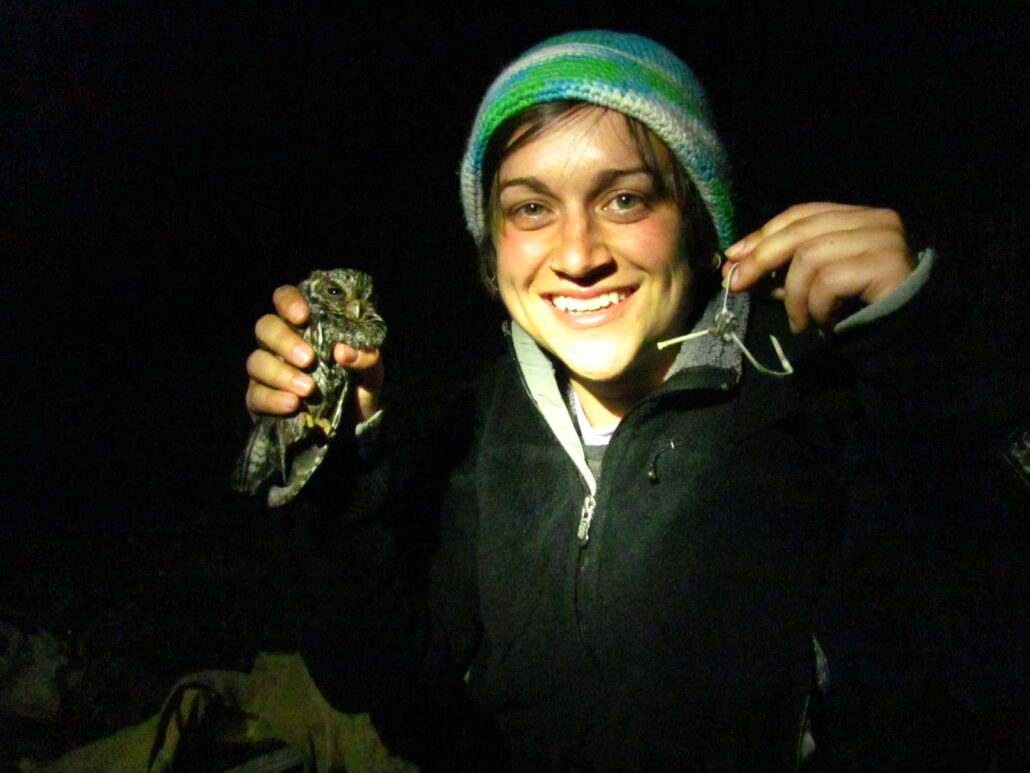
Eager to try their luck again with this male, John Gioia, Julia Varnergardner, and Jayne Reynolds forewent their scheduled evening off and hiked into the nest site on July 10, 2011. John stealthily crept up to the nest tree with the capture pole, trying to avoid alarming the female who was roosting in the cavity with the young, and waited for dusk when the male would start delivering prey in the form of small moths, one per trip. While Julia and Jayne kept watch with binoculars some 20 m away, John quietly raised the extendable pole, one section at a time, until the mesh capture bag that resembled a butterfly net matched the 10 m height of the cavity. Then he marked the height on the pole, and lowered the net to half-mast. And waited.
After about 45 minutes, the male finally appeared in the nest site, signaling his arrival to the female with feather-soft location calls. Then he flew into the nest, and John quickly covered the cavity with the net. And waited. Then an owl appeared at the entrance, but instead of flying straight out as most owls do, it tried to evade capture by crawling out the side of the cavity. Luckily, it lost its talon-hold on the tree and fell into the bag, but then nearly escaped as the pole was lowered before Jayne reached up on her tippy-toes and secured it in her hand at the last second! The J3 trio worked quickly to expose a leg band, but then got distracted by the tip of something sticking through the back feathers—a weathered geolocator! It was HIM! Working carefully to make sure he didn’t escape, the crew snipped the fishing-line harness and removed the geolocator, finished gathering additional data, and set him free. Then the students fairly flew down the trail a safe distance, and danced and hollered in the dappled moonlight! When I met up with the crew at the Manitou Experimental Forest headquarters the next day, I promptly connected the leads of the geolocator to my laptop. To my great surprise, the software reported that the geolocator’s clock was still ticking—after recording two winters of migration, the battery was still working at 731 days!
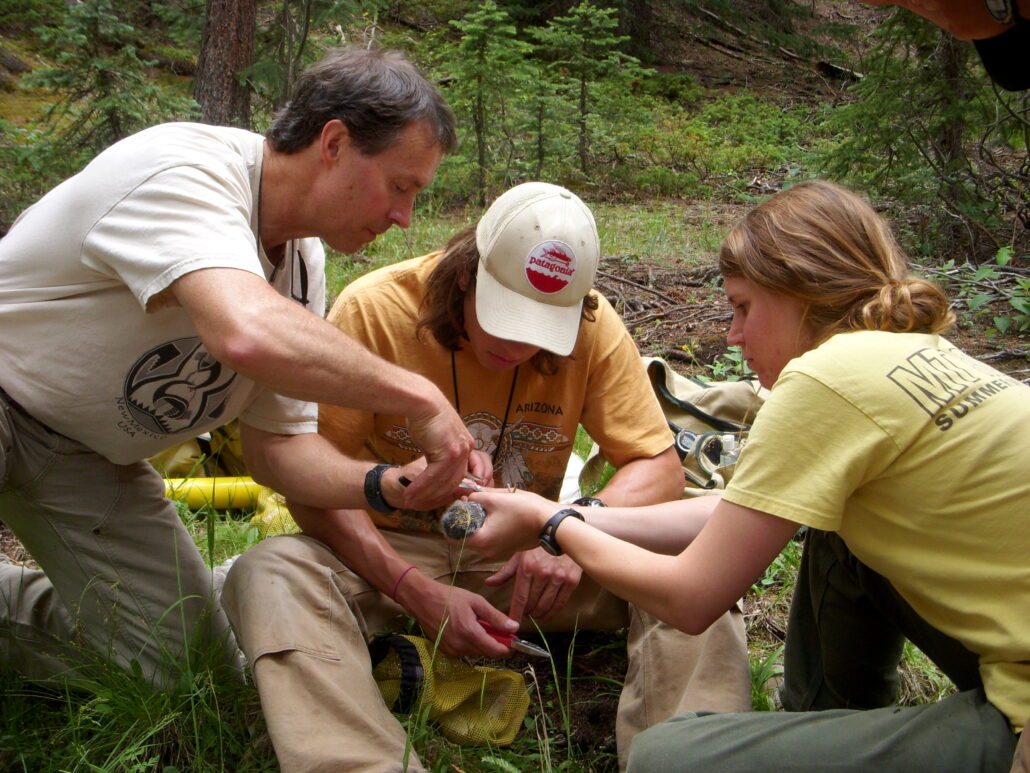
To date, we have recovered a total of 12 geolocators and 8 GPS loggers, which collectively have led to a more detailed understanding of the migration ecology of flams. The two types of loggers have different virtues so we use them both—geolocators reveal positions that are not as accurate as GPS loggers (+/- 50 km vs 10 m, respectively), but many more daily positions can be stored before the battery expires (~400 vs 40 positions). The emerging picture is that most flams, at least those that breed in Colorado, spend their winters in central and southern Mexico (especially the states of Michoacán, Guerrero, and Oaxaca) in the montane forests of the Trans-Mexican Volcanic Belt. After leaving Colorado in early October, fall migrants generally take only 2-3 weeks to reach their wintering grounds, flying 300-400 km/night and making brief stopovers in desert scrub in Mexico’s interior along the way. In contrast, spring migrants leave wintering grounds around early April for their 3-5 week trip back to Colorado, and primarily follow the Sierra Madre Oriental Mountains for the trip back north. Both southbound and northbound owls stopover in isolated mountain ranges (“sky islands”) in the American Southwest and northern Mexico, highlighting the importance of relatively small, forested habitats in these regions. Two winter trips to Mexico over the past decade, coordinated with my colleague Dr. Javier Salgado-Ortiz (University of Michoacán; with thanks to Arvind Panjabi for connecting us), have revealed that over-wintering flams may primarily occupy the pine-oak forests in this volcanic belt region. The structure of these large pine trees strongly resembles what we see in the Colorado breeding sites, which students and I have found is important habitat for foraging, roosting, and territory defense by the owls.
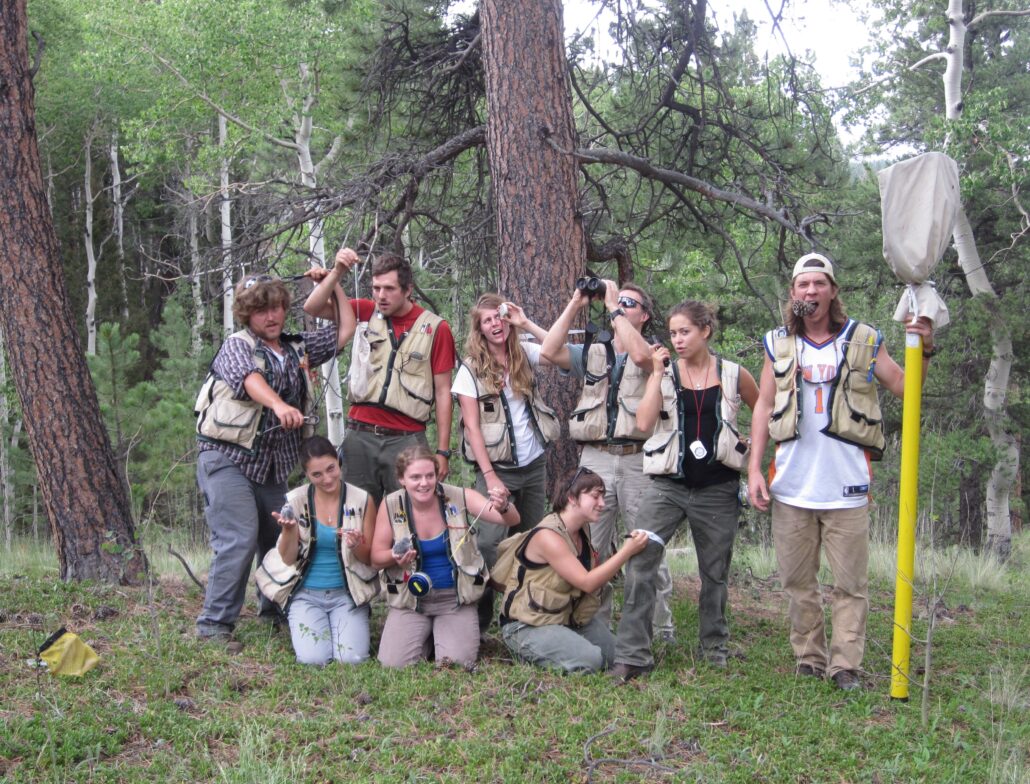
Going forward, students and I plan to continue learning as much as we can about the owl’s migration ecology. Each time we recover an instrument, we reveal more secrets about their long-distance journeys, which ultimately helps in developing conservation plans for them and other forest birds. Among other questions, we need to learn more about how uncontrolled logging on wintering grounds is affecting owls and other birds (and monarch butterflies), and if owl populations breeding in different regions of the West all converge to overwinter in the same areas of Mexico and Central America, or if they are segregated. We’ll keep forging ahead, one challenging owl capture at a time.
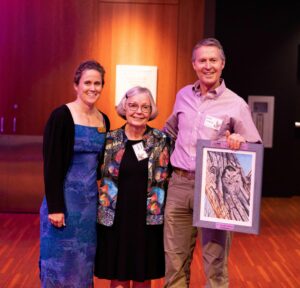
This blog was written by Dr. Brian Linkhart, Associate Professor in the Department of Organismal Biology and Ecology at Colorado College, and was the 2022 recipient of the Bird Conservancy’s Richard G. Levad Award.
All photos by Author.







